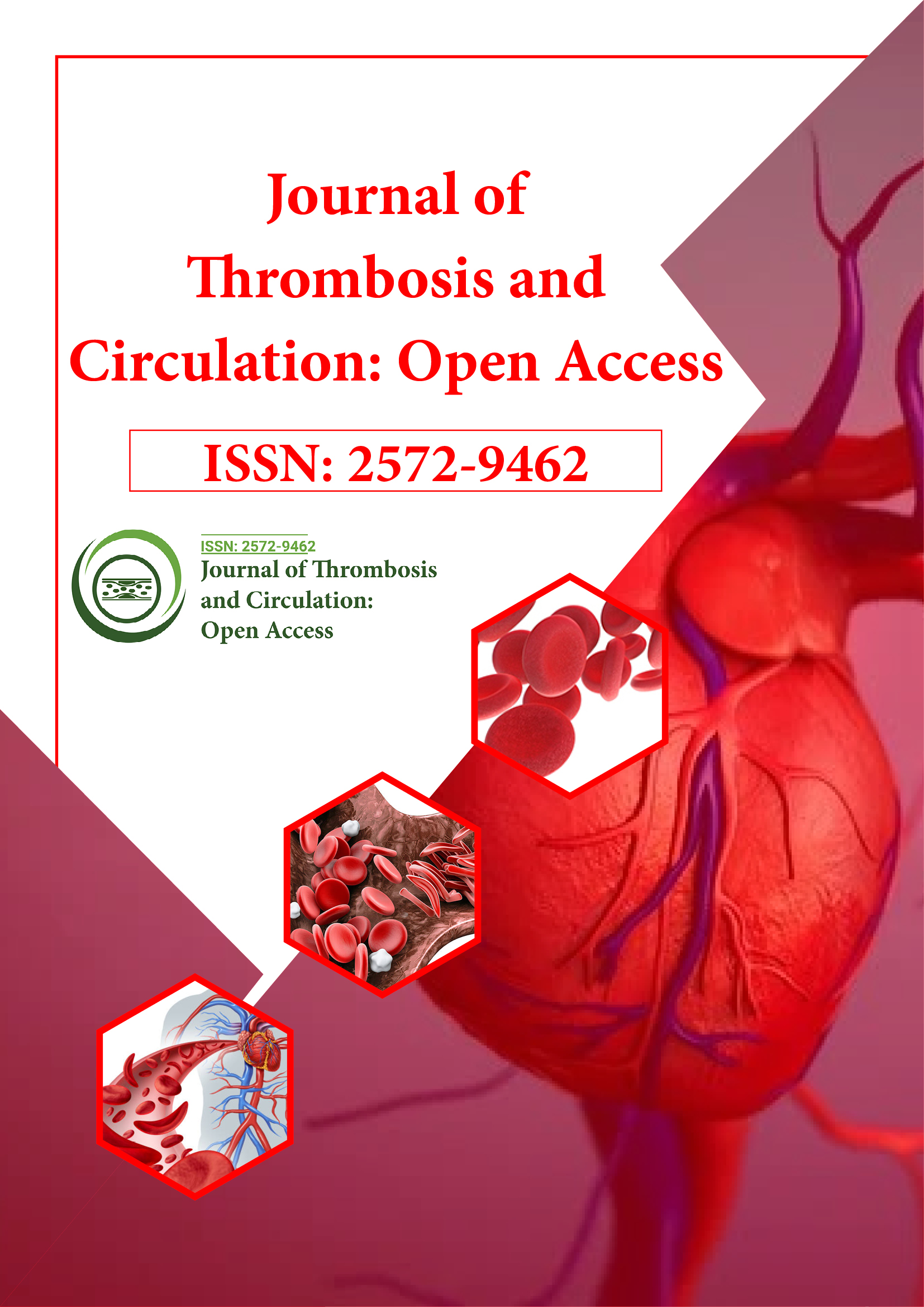Indexed In
- RefSeek
- Hamdard University
- EBSCO A-Z
- Publons
- Google Scholar
Useful Links
Share This Page
Journal Flyer

Open Access Journals
- Agri and Aquaculture
- Biochemistry
- Bioinformatics & Systems Biology
- Business & Management
- Chemistry
- Clinical Sciences
- Engineering
- Food & Nutrition
- General Science
- Genetics & Molecular Biology
- Immunology & Microbiology
- Medical Sciences
- Neuroscience & Psychology
- Nursing & Health Care
- Pharmaceutical Sciences
Commentary - (2025) Volume 11, Issue 1
Deciphering Thrombus Formation: Mechanisms, Impacts, and Therapeutic Strategies
John Eisenga*Received: 21-Mar-2024, Manuscript No. JTCOA-24-25199; Editor assigned: 23-Mar-2024, Pre QC No. JTCOA-24-25199 (PQ); Reviewed: 07-Apr-2024, QC No. JTCOA-24-25199; Revised: 24-Feb-2025, Manuscript No. JTCOA-24-25199 (R); Published: 03-Mar-2025, DOI: 10.4172/2572-9462.25.11.292
Description
Thrombus formation, the formation of blood clots within blood vessels, is a critical physiological response to vascular injury. However, dysregulation of this process can lead to thrombotic disorders, posing significant health risks. Understanding the mechanisms underlying thrombus formation is essential for developing targeted therapeutic strategies to manage thrombotic conditions effectively.
Mechanisms of thrombus formation: Thrombus formation is a complex process involving multiple cellular and molecular components within the blood vessel wall and circulating blood. The process can be broadly divided into three main stages: initiation, propagation, and stabilization.
• Initiation: Thrombus formation is initiated by endothelial injury or dysfunction, exposing the underlying subendothelial matrix to blood components. This exposure triggers platelet adhesion to the site of injury, facilitated by von Willebrand Factor (vWF) and Glycoprotein Ib (GPIb) receptors on platelet surfaces.
• Propagation: Following platelet adhesion, activated platelets release various prothrombotic mediators, including Adenosine Diphosphate (ADP) and Thromboxane A2 (TXA2), which recruit additional platelets to the growing thrombus. Concurrently, the coagulation cascade is activated, leading to the generation of thrombin, a central enzyme in clot formation. Thrombin converts fibrinogen to fibrin, which forms a mesh network reinforcing the platelet plug, thereby propagating thrombus formation.
• Stabilization: As the thrombus matures, it undergoes stabilization through cross-linking of fibrin fibers by activated factor XIII (FXIII). This cross-linking strengthens the clot structure, making it more resistant to mechanical disruption.
Consequences of thrombus formation: Thrombus formation can have serious clinical consequences depending on its location and size. Thrombi can occlude blood vessels, leading to tissue ischemia or infarction. For example, arterial thrombi can cause myocardial infarction or stroke, while venous thrombi can result in Deep Vein Thrombosis (DVT) or Pulmonary Embolism (PE). Additionally, thrombi can embolize, traveling through the bloodstream and lodging in distant organs, further exacerbating tissue damage.
Therapeutic approaches: The management of thrombus formation involves both pharmacological and interventional strategies aimed at preventing thrombosis or dissolving existing thrombi.
• Anticoagulant therapy: Anticoagulants such as heparin, warfarin, and Direct Oral Anticoagulants (DOACs) interfere with the coagulation cascade, inhibiting thrombus formation and preventing thromboembolic events.
• Antiplatelet agents: Antiplatelet drugs like aspirin, clopidogrel, and GPIIb/IIIa inhibitors inhibit platelet activation and aggregation, reducing the risk of arterial thrombosis in conditions such as acute coronary syndrome or stroke.
• Thrombolytic therapy: Thrombolytic agents such as alteplase and tenecteplase promote the dissolution of existing thrombi by activating plasminogen, leading to fibrinolysis and clot breakdown. These agents are commonly used in the management of acute ischemic stroke, myocardial infarction, or massive pulmonary embolism.
Conclusion
Thrombus formation is a complex process with significant implications for cardiovascular health. Understanding the mechanisms driving thrombus formation and its clinical consequences is crucial for developing effective therapeutic interventions to manage thrombotic disorders and prevent thromboembolic complications. Continued research in this field holds promise for advancing our understanding of thrombus formation and improving patient outcomes through targeted and personalized treatment approaches.Citation: Eisenga J (2025) Deciphering Thrombus Formation: Mechanisms, Impacts, and Therapeutic Strategies. J Thrombo Cir. 11:292.
Copyright: © 2025 Eisenga J. This is an open-access article distributed under the terms of the Creative Commons Attribution License, which permits unrestricted use, distribution and reproduction in any medium, provided the original author and source are credited.
